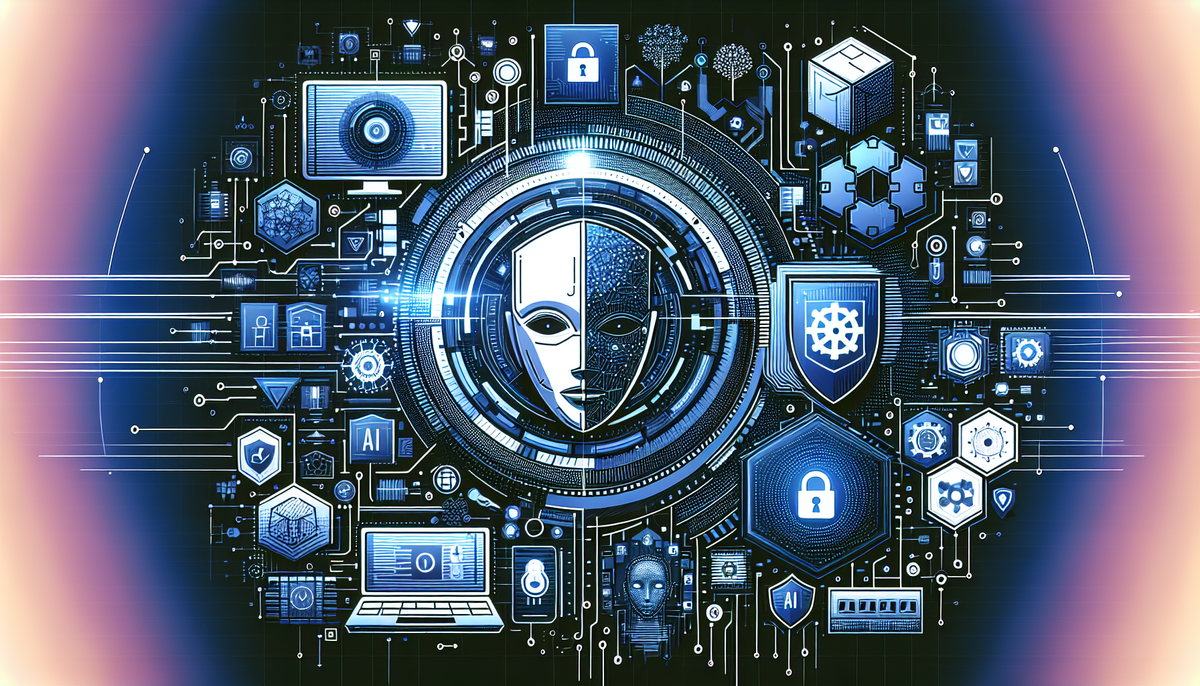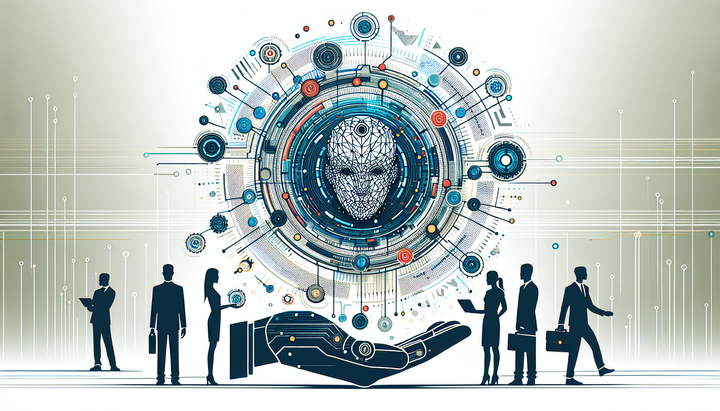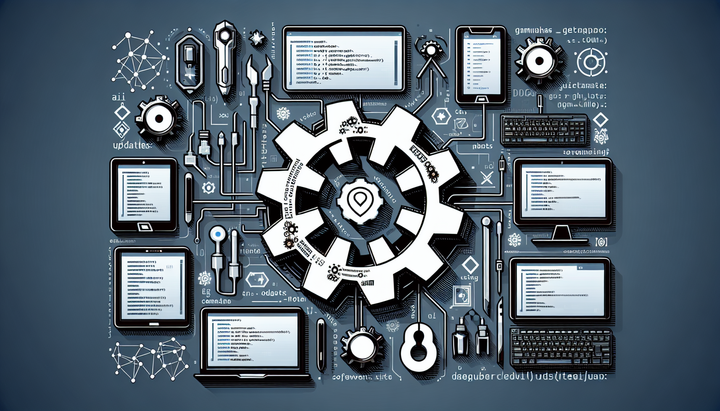AI-Driven Cybersecurity: Dream Secures $100M Investment?

Introduction: The Emergence of AI-Driven Cybersecurity
The digital age is witnessing a rapid transformation in how data and infrastructure are secured. As cyberattacks become increasingly sophisticated, the need for advanced defenses has never been more critical. One of the most promising developments in this space is the integration of artificial intelligence into cybersecurity systems. AI-driven cybersecurity not only enhances threat detection but also enables faster response times, improving the resilience of critical infrastructure. Recently, Dream, an innovative AI-powered cybersecurity startup, completed a major funding round that raised $100M, elevating its valuation to $1.1B. This influx of capital is set to accelerate breakthroughs in national cyber defense and reshape the way governments and enterprises protect their digital assets.
Dream's Latest Funding Round: A Game Changer
The new funding round for Dream marks a significant milestone in its journey as a pioneer of AI-driven cybersecurity. With investor confidence on the rise, the financial backing will help Dream push the boundaries of cybersecurity technology by focusing on:
- Developing state-of-the-art threat detection algorithms
- Enhancing machine learning models for real-time risk analysis
- Integrating AI tools with existing cybersecurity architectures
- Expanding research and development in national cyber defense
This capital injection is expected to fortify Dream's capabilities to deliver scalable solutions that protect critical infrastructure, ranging from financial systems to energy grids. Notably, Dream's approach leverages deep learning techniques to mimic the human brain's neural processes—a technology reminiscent of neuromorphic computing—which allows for more energy-efficient and faster anomaly detection in complex network environments.
How AI is Transforming Cybersecurity
The integration of AI in cybersecurity is a revolutionary step forward. Traditionally, networks and enterprise systems have relied on signature-based detection methods that are often slow to recognize new threat patterns. In contrast, AI algorithms can learn from vast datasets, adapt to emerging threats, and provide predictive insights that allow systems to preemptively block attacks. Here are some key areas where AI is making an impact:
- Real-Time Threat Analysis: Using deep neural networks, AI can parse through massive amounts of data in real time, identifying unusual behavior and flagging potential threats before they escalate into larger problems.
- Adaptive Defense Systems: AI-powered systems can adjust their defense mechanisms dynamically as cyber threats evolve, thereby offering continuous and adaptive protection.
- Incident Response Automation: AI tools can automate many aspects of incident response, from preliminary diagnostics to the execution of remedial measures, significantly reducing the time required to counteract attacks.
- Enhanced Predictive Analytics: With advanced predictive models, companies can forecast potential vulnerabilities and optimize their security investments accordingly.
These capabilities are critical for national cybersecurity, where the stakes are higher and the potential disruption from cyberattacks can be significant. Dream’s recent funding is anticipated to spread these advanced technologies in environments where protecting infrastructure integrity is of utmost priority.
Impact on National Cyber Defense and Critical Infrastructure
One of the most compelling aspects of Dream’s innovation is its potential application in safeguarding national critical infrastructure. Government agencies and major private enterprises are increasingly dependent on interconnected systems for operations. This interdependence, however, makes them attractive targets for cyberattacks. AI-driven cybersecurity solutions like those developed by Dream offer several advantages:
- Early Warning Systems: AI can detect subtle irregularities that precede a cyberattack, offering vital early warnings that allow for proactive risk management.
- Resource Optimization: By automating routine security checks and rapidly analyzing threat patterns, AI helps optimize the use of human and technical resources.
- Resilience and Redundancy: AI systems are designed to learn from previous incidents, thereby strengthening defense mechanisms over time and reducing the risk of future breaches.
- Scalable Security: Such systems provide scalable solutions that can be deployed across various sectors, from energy to healthcare, ensuring comprehensive coverage.
Industry experts have noted that these developments in AI-driven cybersecurity could prove to be a turning point. For instance, sources like IEEE and MIT Tech Review have discussed how machine learning is increasingly being adopted to mitigate risks across digital infrastructures. Dream is poised to be at the forefront of this evolution, inviting further collaboration between public and private sectors to bolster national security measures.
Expert Opinions and Industry Reactions
Cybersecurity experts and tech analysts are closely monitoring Dream’s progress. Many believe that the company’s focus on AI-driven methods will influence the industry at large. Some of the key observations include:
- Enhanced Security Posture: Experts suggest that integrating AI into cybersecurity frameworks significantly enhances a company’s security posture by enabling dynamic threat intelligence.
- Reduction of False Positives: Traditional cybersecurity systems often generate a high number of false alerts, which can overwhelm IT teams. AI systems, on the other hand, are better at distinguishing genuine threats from benign anomalies.
- Improved Incident Management: With the speed and automation AI offers, cybersecurity teams can focus on strategic decision-making rather than getting bogged down by routine threat monitoring.
In a recent report by Arxiv, researchers highlighted that AI-driven models can reduce reaction times by a significant margin compared to legacy systems. This sentiment is echoed by stakeholders in the cybersecurity community, who are optimistic about Dream’s prospects and its potential to disrupt established norms in the industry.
Challenges and Future Directions
Despite the promising prospects, the path to widespread adoption of AI-driven cybersecurity solutions is not without challenges. Some of the primary obstacles include:
- Complexity of Integration: Integrating advanced AI systems into existing cybersecurity architectures can be complex and resource-intensive. Companies must invest in both technology and retraining for their personnel.
- Data Privacy Concerns: As with any AI solution, ensuring that data is processed in compliance with privacy laws is essential. Companies like Dream must ensure that their systems do not inadvertently expose sensitive information.
- Adversarial Attacks on AI: Cyber adversaries are continually refining their techniques, including launching attacks designed to confuse or mislead AI algorithms. Building resilient AI systems that can withstand such tactics is an ongoing challenge.
- Cost and Scalability: While AI promises long-term savings by automating many routine tasks, the initial deployment and scaling of these technologies require significant investment. The recent funding round is a promising indicator that investors are cognizant of these challenges and are willing to back solutions that offer scalable benefits.
Looking forward, the integration of AI into cybersecurity is expected to evolve further. Innovations in areas such as neuromorphic computing, which mimics the human brain’s architecture for more efficient processing, could pave the way for even more advanced and resilient AI systems. Additionally, the increasing trend of decentralized AI may allow for more robust, distributed defense mechanisms that are less vulnerable to centralized points of failure.
Case Studies and Real-World Applications
Several industry case studies illustrate the potential applications of AI-driven cybersecurity. For example, financial institutions have adopted AI to monitor transactions in real time, detecting fraudulent activities with unprecedented speed and accuracy. Similarly, in the energy sector, AI systems are now being deployed to protect the digital frameworks of power grids against sophisticated cyber threats.
Dream’s innovative approach aligns closely with these developments. By leveraging AI to predict, detect, and mitigate cyber threats, the startup offers a comprehensive solution that is both proactive and adaptive. The company’s technology has been piloted in a number of settings, yielding positive results in reducing breach incidents and enhancing overall system resilience.
Conclusion: A New Era in Cybersecurity
The successful funding round for Dream signifies more than just a financial milestone—it represents the dawn of a new era in cybersecurity. AI-driven solutions are transforming the landscape by offering advanced, scalable, and highly adaptive defense mechanisms that traditional systems simply cannot match. As cyber threats become increasingly complex and prevalent, the need for innovative and robust protective measures grows ever more urgent.
With the backing of this $100M investment, Dream is well-positioned to accelerate its research and development efforts, setting the stage for next-generation cybersecurity solutions that protect not only private enterprises but also national critical infrastructure. By bridging the gap between traditional cybersecurity techniques and cutting-edge AI technology, Dream is paving the way for a future where the digital world is far more secure and resilient.
For those interested in staying ahead of cyber threats, it is essential to follow the advancements in AI-driven cybersecurity. Industry leaders, academic researchers, and technology professionals alike are urging for an increased focus on these innovative systems. As the narrative shifts, the successful convergence of AI and cybersecurity will likely become a cornerstone of how we secure digital assets in the years to come.
To learn more about the future of AI-powered cybersecurity, industry professionals can explore further readings from sources such as the IEEE, MIT Tech Review, and NIST publications. These resources offer deep insights and data-driven perspectives on how emerging technologies are reshaping our understanding of digital defense. The journey has just begun, and with continued investment and research, the evolution of AI in cybersecurity promises to redefine what is possible in protecting our digital future.



Comments ()